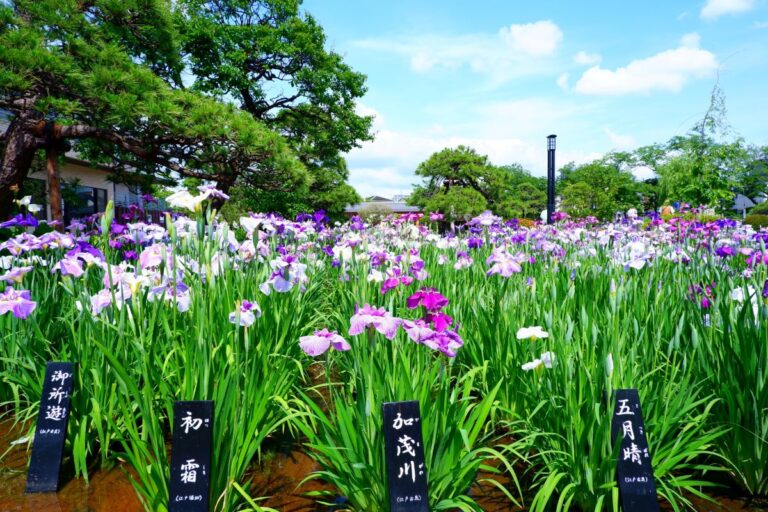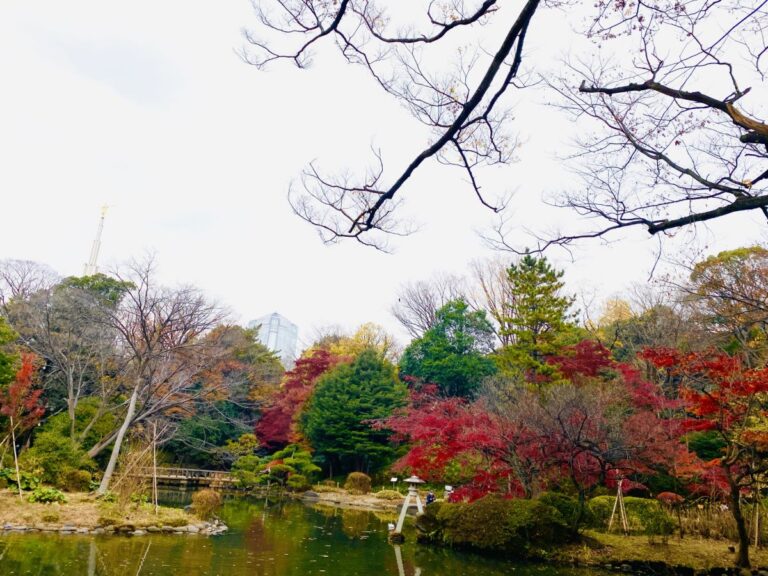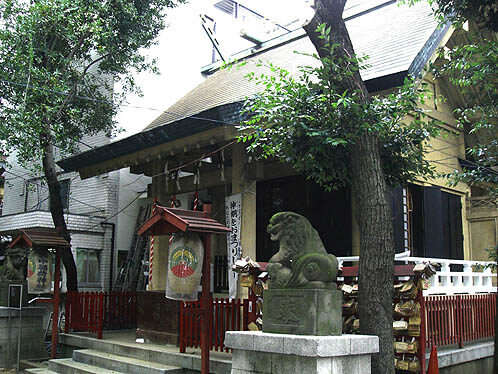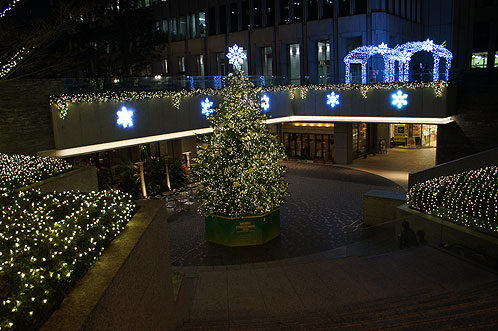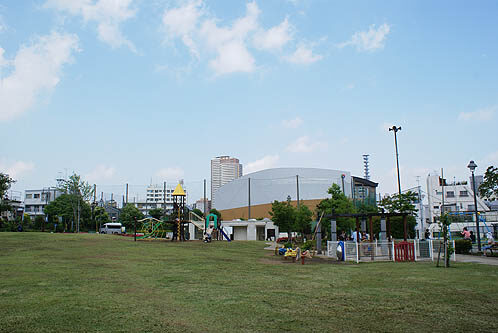Shinjuku Gyoen is a garden in the heart of Shinjuku where visitors can enjoy a variety of styles including a Japanese garden, French-style landscaped garden and English landscape garden.
The Garden is one of Tokyo’s most famous and beloved parks. It is located in the heart of the city and offers visitors a peaceful oasis away from the hustle and bustle of Tokyo life.
Originally a residence of the Naitō family during the Edo period, it was later converted into a garden and opened to the public in 1949. Today, the park covers an area of 144 acres and features a wide variety of landscapes, including traditional Japanese gardens, French gardens, and English gardens.
- Shinjuku Gyoen National Garden is one of Tokyo’s largest and most popular parks.
- The park covers an area of 144 acres and features a wide variety of landscapes.
- It offers visitors a peaceful oasis away from the hustle and bustle of Tokyo life.
- The park features traditional Japanese gardens, French gardens, and English gardens.
- It is a great place to enjoy the seasonally varied atmosphere and rich nature, such as cherry blossoms in the spring.
The garden was originally created as an imperial garden, but was opened as a national park after the war. The former resting place of the imperial family in the garden is designated as an important cultural property.


The park is famous for its beautiful scenery from season to season, especially cherry blossoms in spring and autumn leaves in fall.
There are also events such as nature classes for parents and children and photo and painting exhibitions in the art gallery.

Areas Of The Garden
Shinjuku Gyoen National Garden is a beautiful oasis in the middle of Tokyo, offering visitors a chance to escape the hustle and bustle of the city and enjoy nature. Here are some of the top attractions to see while visiting the garden:
- The Traditional Japanese Garden: This garden is the oldest in the park and features large ponds with islands and bridges. The garden is well-manicured with shrubs and trees surrounding the water, creating a peaceful and serene atmosphere.
- The French Formal Garden: This garden is a beautiful example of a classic French garden, with symmetrical patterns and neatly trimmed hedges. It’s a great spot for a picnic or to relax in the sun.
- The English Landscape Garden: This garden is designed to look like a natural English landscape, with rolling hills, meadows, and a variety of trees and flowers. It’s a great place for a leisurely stroll.
- The Greenhouse: The greenhouse at Shinjuku Gyoen National Garden is home to a variety of exotic plants and flowers from around the world. It’s a great place to visit on a rainy day or to escape the heat in the summer.
- The Taiwan Pavilion: This pavilion was a gift from Taiwan and features traditional Taiwanese architecture and beautiful gardens. It’s a great place to learn about Taiwanese culture and enjoy the peaceful surroundings.
No matter what your interests are, there is something for everyone at Shinjuku Gyoen National Garden. Take your time exploring the different gardens and attractions and enjoy the beauty of nature in the heart of Tokyo.
The garden is also home to a variety of events throughout the year, including cherry blossom viewing in the spring including the NAKED Sakura Night Garden exhibition, and chrysanthemum exhibitions in the fall. Be sure to check the park’s website for the latest information on events and activities.
Layout
Shinjuku Gyoen National Garden is divided into three distinct styles: Formal Garden, Landscape Garden, and Japanese Traditional Garden. The current garden’s layout dates back to 1906, with extensive rebuilding taking place after World War II.
The Formal Garden is located in the southern part of the park and features a symmetrical layout with neatly trimmed hedges and flower beds. The garden’s centerpiece is a French-style garden with a large fountain and a rose garden. The Formal Garden is an excellent place to relax and enjoy the beauty of the flowers and trees.
The Landscape Garden is located in the middle of the park and is the largest of the three gardens. It features a more naturalistic style with winding paths, hills, and ponds. The garden has a large lake in the center, which is surrounded by various trees, including cherry blossom trees. Visitors can take a boat ride on the lake and enjoy the view of the garden from the water.
The Japanese Traditional Garden is located in the northern part of the park and features a traditional Japanese garden design with a pond, bridges, and stone lanterns. The garden is known for its beautiful cherry blossom trees and is a popular spot for hanami, the Japanese tradition of picnicking under the cherry blossoms.
The park’s layout is well-organized and easy to navigate, with clear signage and maps available at the entrance. You can easily spend a whole day exploring the different gardens and enjoying the beauty of nature.
According to Shinjuku Gyoen National Garden’s official website, the park covers a total area of 58.3 hectares, with the Formal Garden covering 3.5 hectares, the Landscape Garden covering 31 hectares, and the Japanese Traditional Garden covering 11 hectares.
Visiting Information
If you’re planning to visit Shinjuku Gyoen National Garden, here are some important details to keep in mind:
Opening Hours and Admission Fees
The garden is open from 9:00 am to 4:30 pm, with last entry at 4:00 pm. The entrance fee is 500 yen for adults and 250 yen for children. However, the garden may be closed on Mondays, and also during the New Year’s holidays (December 29 to January 3).
Facilities
Shinjuku Gyoen National Garden has several facilities that visitors can use:
- Information Center: Located near the Sendagaya Gate, the information center provides visitors with maps, brochures, and other useful information about the garden.
- Restaurants and Cafes: There are several restaurants and cafes within the garden where you can grab a bite to eat or a drink.
- Restrooms: There are restrooms located throughout the garden, including near the main entrance and the Japanese garden.
- Lockers: Lockers are available near the main entrance where you can store your belongings.
Rules and Regulations
To ensure a pleasant experience for all visitors, there are several rules and regulations that must be followed:
- Do not bring pets into the garden.
- Do not bring bicycles or other vehicles into the garden.
- Do not pick flowers or damage plants.
- Do not smoke in the garden.
- Do not bring alcohol into the garden.
By following these rules, you can help preserve the beauty and tranquility of Shinjuku Gyoen National Garden for future generations to enjoy.
History
Shinjuku Gyoen National Garden, located in the heart of Tokyo, has a rich history dating back to the Edo period. During this time, it served as the residence of Lord Naito, a feudal lord of the Edo era. Later, it was converted into a botanical garden before being opened to the public as a national park in 1949.
During World War II, the garden was destroyed, but it was rebuilt and reopened to the public in 1949. Today, Shinjuku Gyoen is a popular destination for both locals and tourists alike, offering a peaceful escape from the hustle and bustle of the city.
The garden is divided into three distinct styles: French Formal, English Landscape, and Japanese Traditional. Each section is meticulously maintained and features a variety of flora and fauna, including cherry blossoms, azaleas, and maple trees.
Over the years, Shinjuku Gyoen has undergone several renovations and updates to improve its facilities and maintain its beauty. Today, it remains one of Tokyo’s most beloved parks, attracting millions of visitors each year.
The Sum Up
Shinjuku Gyoen National Garden is a must-visit destination for anyone visiting Tokyo. The garden offers a peaceful escape from the hustle and bustle of the city, with its meticulously maintained gardens and expansive lawns. Whether you are looking to relax, take a stroll, or have a picnic, Shinjuku Gyoen has something for everyone.
One of the highlights of the garden is the variety of gardens on display. From the traditional Japanese garden to the French formal garden, each area offers a unique experience. The greenhouse is also a must-see, with its collection of tropical and subtropical plants.
Another great feature of Shinjuku Gyoen is its accessibility. The garden is located in the heart of Tokyo and is easily accessible by public transportation. Additionally, the garden is open year-round, making it a great destination no matter the season.
Overall, Shinjuku Gyoen National Garden is a beautiful and serene oasis in the middle of Tokyo. With its stunning gardens, peaceful atmosphere, and convenient location, it is a destination that should not be missed on your trip to Tokyo.
Shinjuku Gyoen is one of the best places to see cherry blossoms in Tokyo. The garden has over 1,000 cherry trees, making it a popular spot for hanami, or cherry blossom viewing. However, due to its popularity, the garden can get crowded during peak cherry blossom season.
| Name | Shinjuku Gyoen 新宿御苑 |
|---|---|
| business hours | 9:00 – 16:30 (Admission until 16:00) *Depends on each facility. |
| business holiday | Mondays (or the following day if Monday is a national holiday), Year-end and New Year holidays (12/29 – 1/3) Open every day from 3/25 to 4/24 and 11/1 to 11/15. |
| fee | Adults (15 years and older) 200 yen, Elementary and junior high school students 50 yen, Free for infants and younger |
| residence | 11 Naito-cho, Shinjuku-ku, Tokyo |
| telephone number | 03-3350-0151 |
Directions
- 5 minutes walk from Sendagaya Station on Chuo Line.
- 5 minutes walk from Shinjuku-Gyoenmae Exit 1 on Marunouchi Line.
- 10 minutes walk from South Exit of JR Shinjuku Station.

